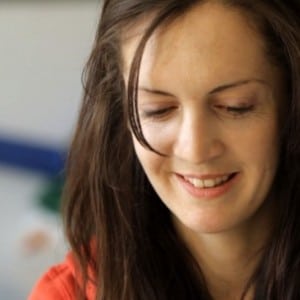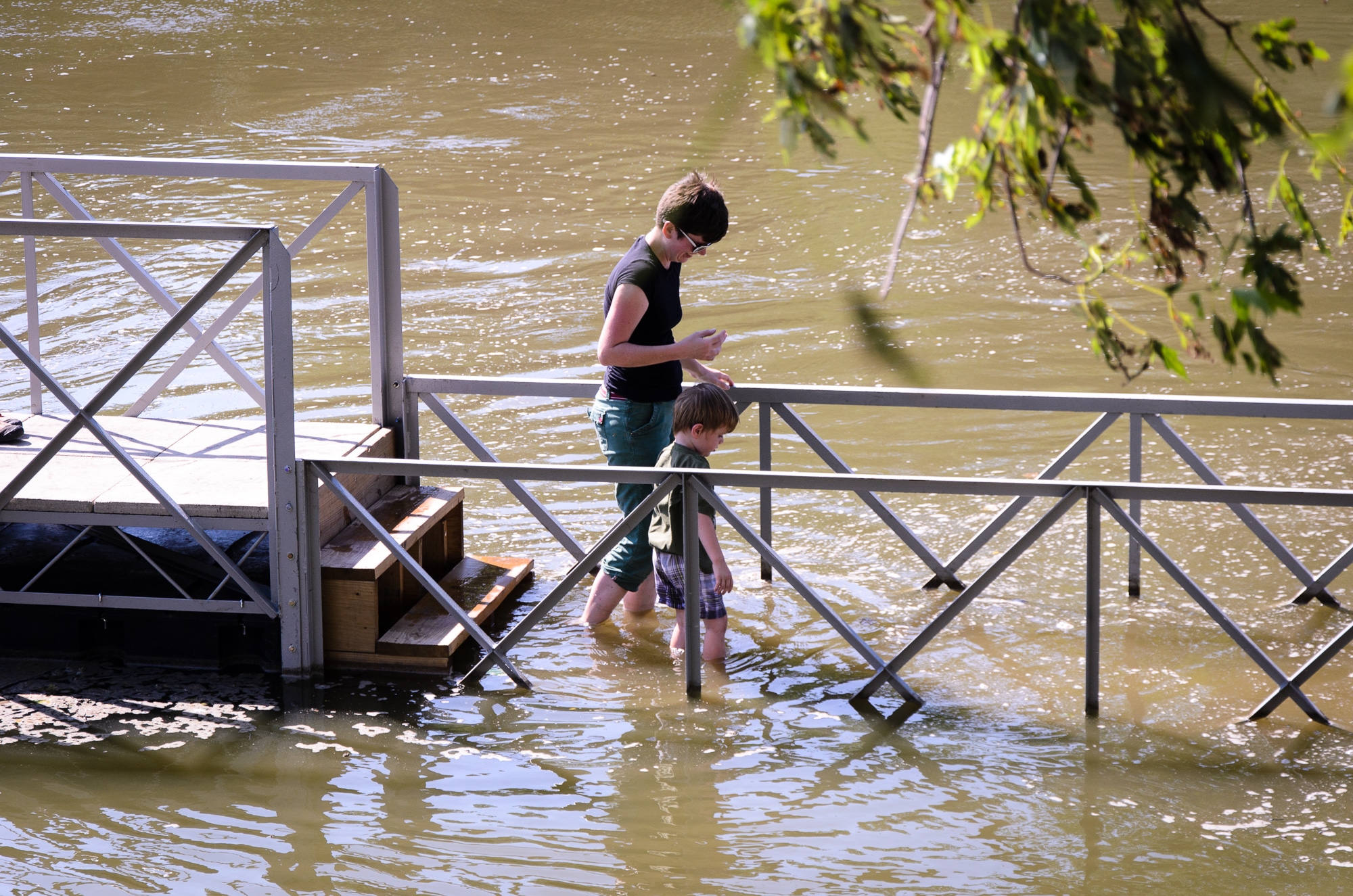


Wading Bridge
In July 2014, the Public Art Foundation revisited a grassroots effort to address the state of water in our urban community. at that time, the Des Moines Area Metropolitan Planning Organization (MPO) was investigating new ways to attract citizens in our water-trails. the MPO saw public art as a means of creating awareness and provoking critical conversation about water-quality improvement in the city and state. Over the next 11 months, through a selection process, fundraising, partnerships and volunteer work, new York-based artist Mary Mattingly was selected and commissioned to create a temporary public art installation. A location was identified and the concept design for Wading Bridge was chosen.
Initially located off the Raccoon Riverbank, the structure allowed people to walk not only over the water—but in the water—as the design of the center section of Wading Bridge was be submerged under water.
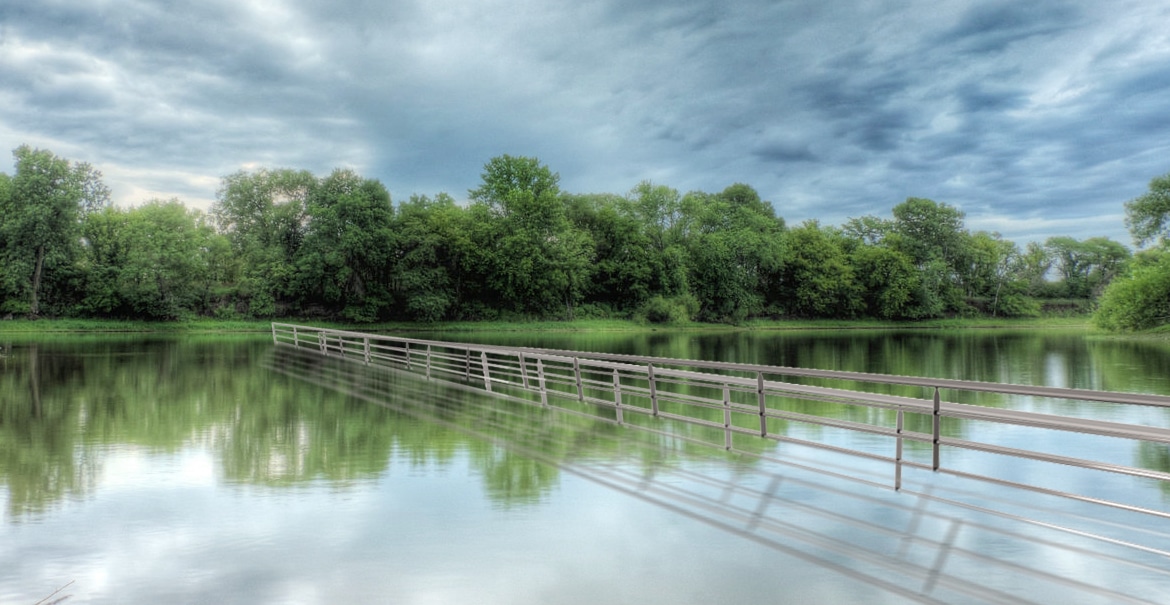
On 8 October 2015, Hyperallergic, a Brooklyn-based arts blogazine published an article about this project by Wilson Tarbox. Tarbox wrote “that for the past 14 years, Mattingly’s work has been about imagining how we could survive a future ravaged by climate change. Her installations and performances are often staged in highly sustainable, built environments that rely on community involvement. … In its former location on the Raccoon River, Wading Bridge did something similar, allowing visitors to interact safely with a natural resource, which, despite its vital role to the city of Des Moines, is often perceived as unpredictable and dangerous.”
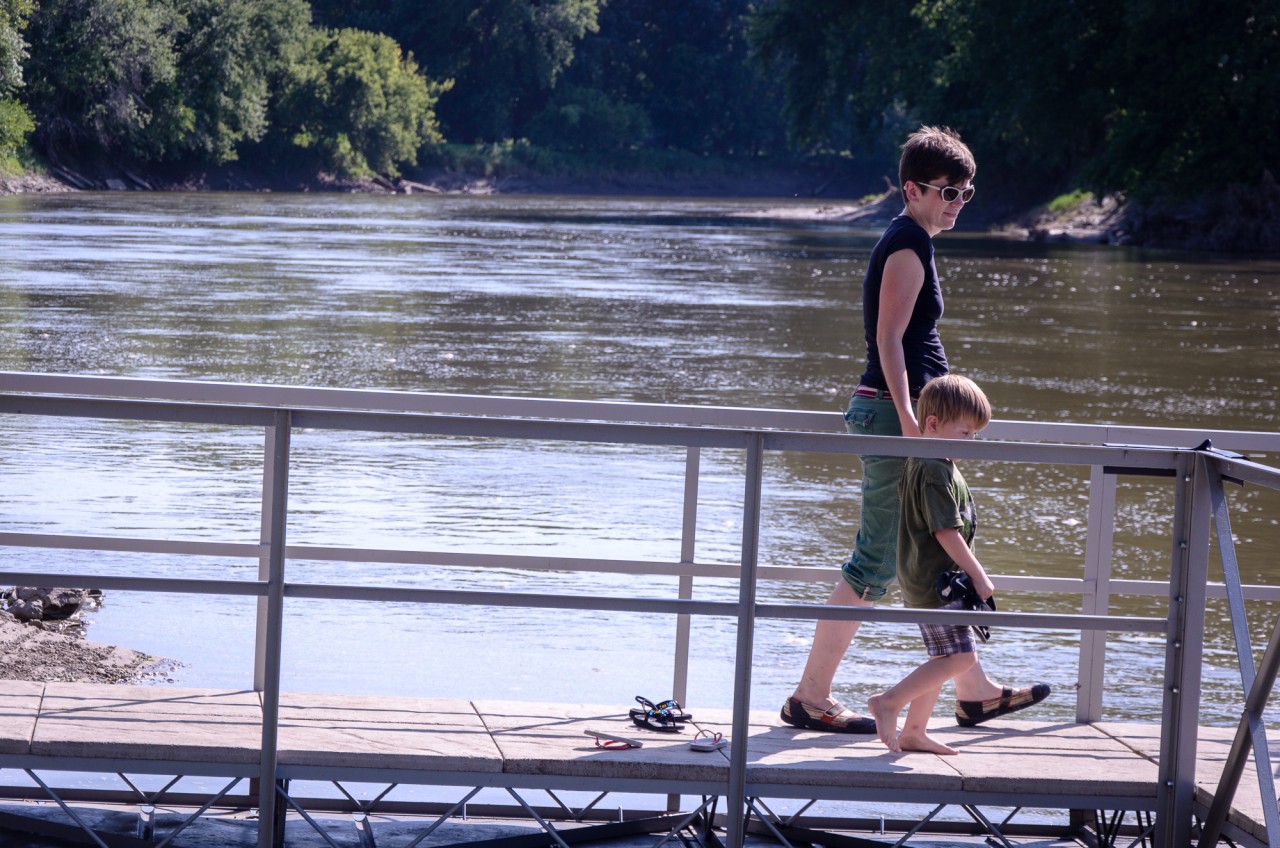
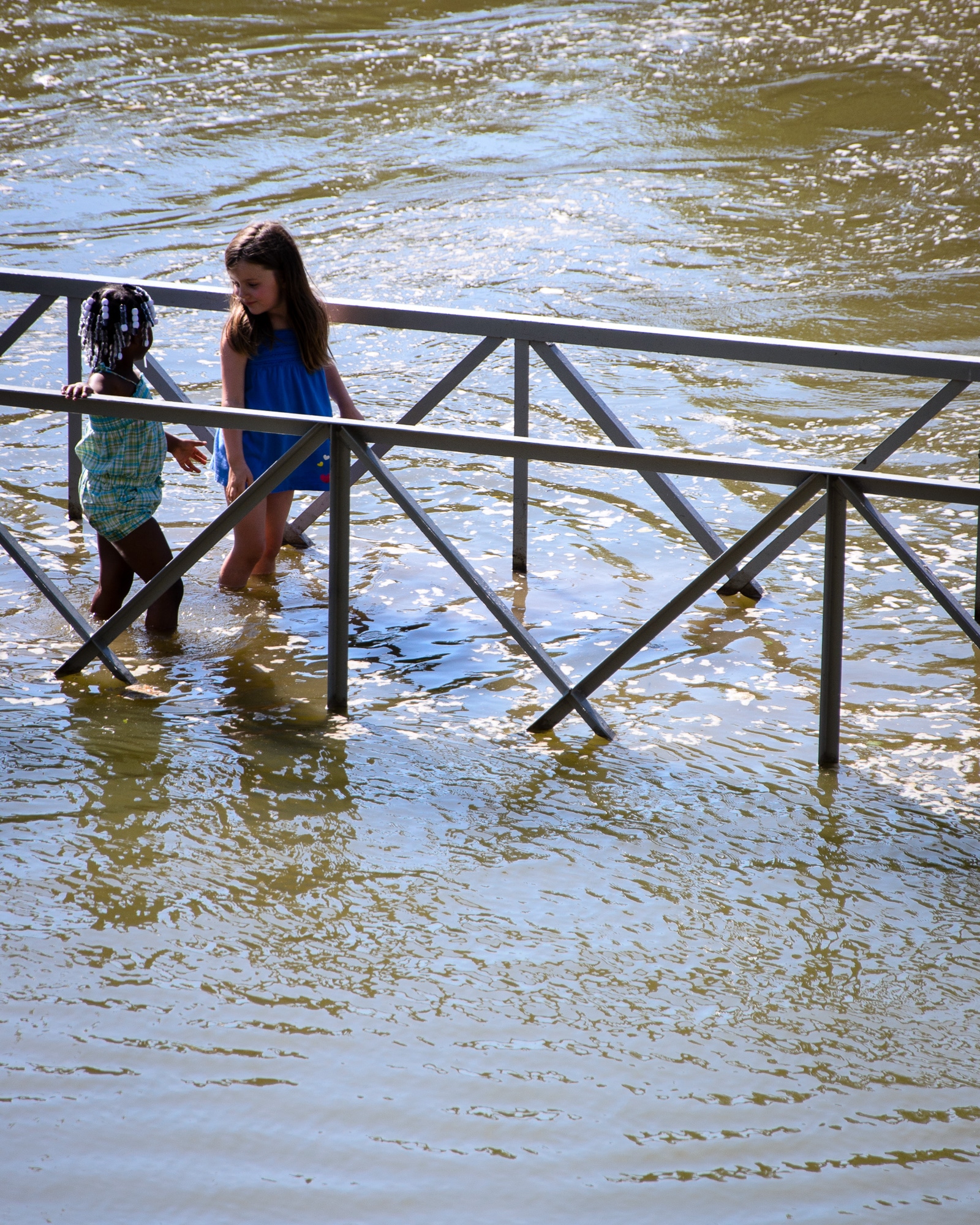
“Water is not necessarily something that I feel safe around,” the artist told the Tarbox in an interview. “But hearing people in Des Moines express their yearning for these natural spaces reminded me that we cannot only talk about their destruction,” Mattingly said. “We also need to remind ourselves of the beauty and joy that these spaces bring us and remember that that is another reason we struggle for their preservation.”

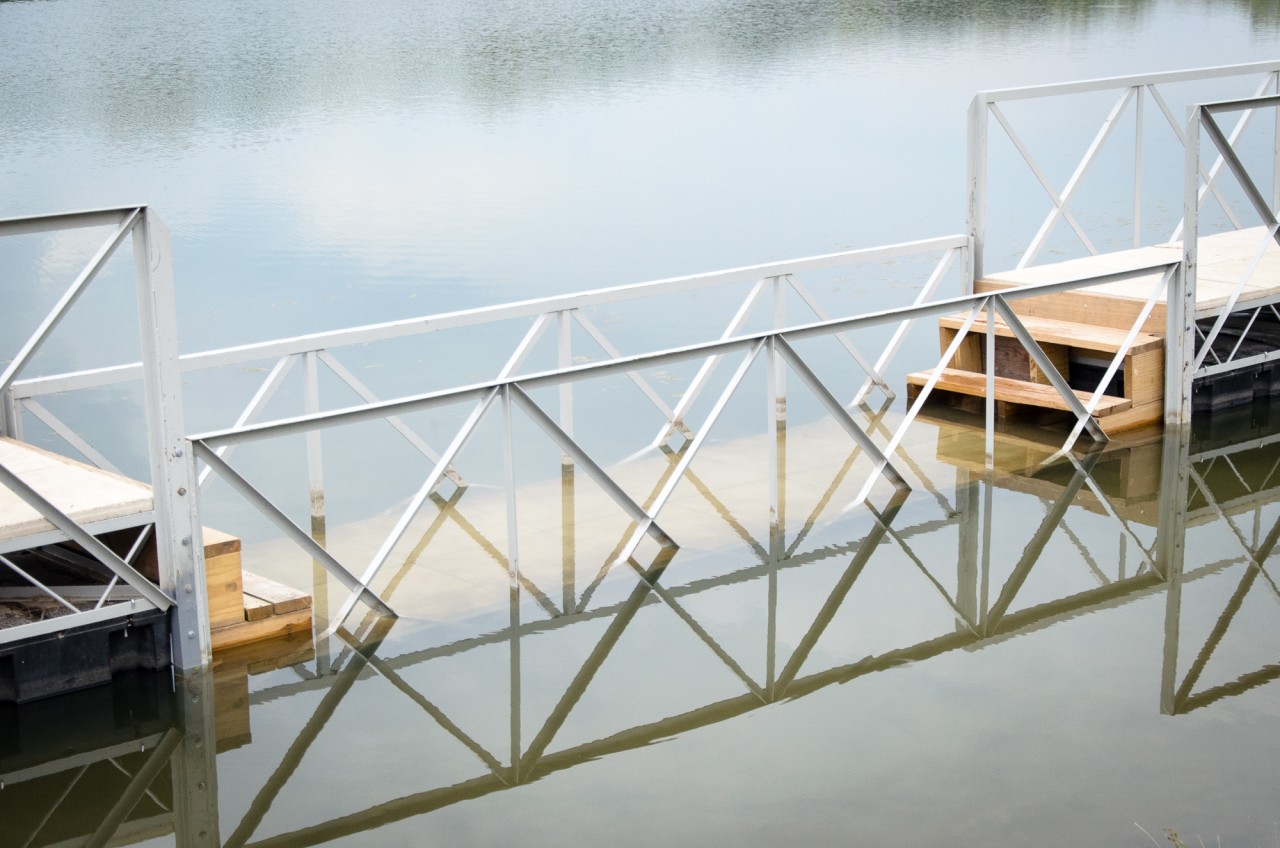

“Our rivers determine our land, livelihood and lives—and Des Moines’ rivers are a force,” Mattingly said at the project’s unveiling on 30 May 2015. “Crossing 'Wading Bridge' and getting our feet wet allows us a momentary intimacy with this river.”
Mary Mattingly
